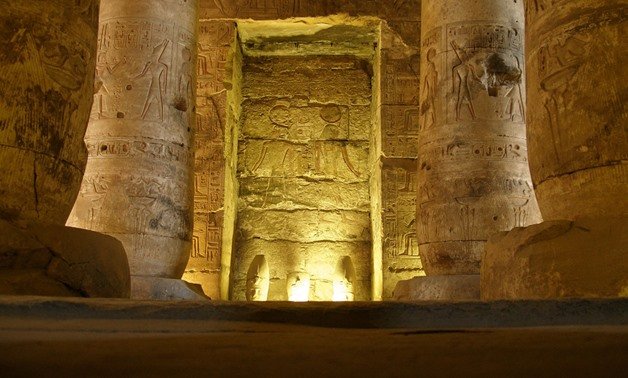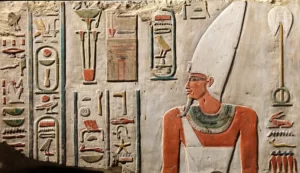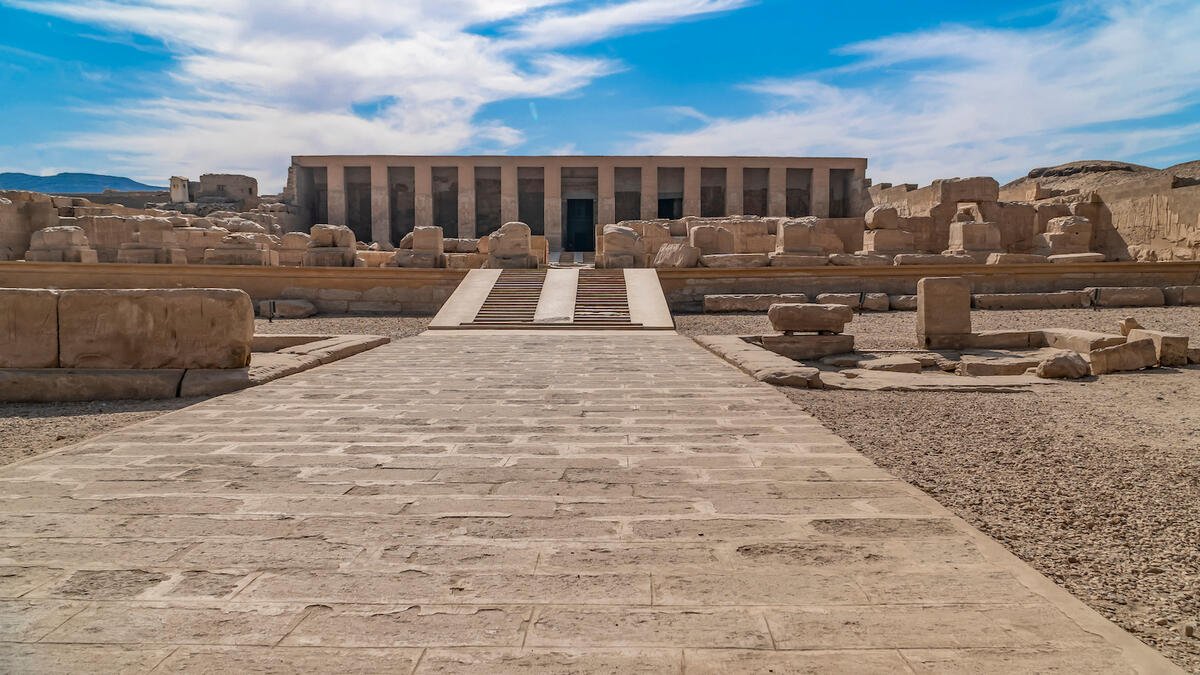Abydos Temple Situated 500 km south of Cairo, Abydos remains a pivotal juncture in the tapestry of ancient Egypt, boasting a rich history that spans from the Predynastic period to the Middle Kingdom. This article will delve into the intricate details of Abydos’s evolution, emphasizing its early significance, political transformations, and the flourishing veneration of Osiris, encapsulated by the enigmatic Osirian Temple.
Early Significance
During the Predynastic period, Abydos served as the designated burial ground for regional rulers hailing from Thinis, whose capital stood on the banks of the Nile. Umm el-Gaab, colloquially named the “mother of pots,” marked the inception of Abydos’s historical prominence, embodying the early sacredness of the site.
Political Shifts and Spiritual Emergence
Around 3000 BCE, the political landscape underwent a significant shift with the establishment of Memphis as Egypt’s new capital. Consequently, Abydos experienced a gradual decline in political importance, paving the way for its emergence as a spiritual center. As pharaohs increasingly chose the Memphite necropolis for their final resting places, Abydos underwent a metamorphosis, evolving into a haven of religious significance.
Abydos Temple as a Cult Center for Osiris
The Old Kingdom (ca. 2200 BCE), Abydos Temple had solidified its status as a primary cult center for Osiris, the revered god of the dead. This marked a profound shift in Abydos’s identity, transitioning from political relevance to becoming a focal point for Osiris worship. The amalgamation of Osiris with the ancient canine god, Khentiamentiu, resulted in the appellation “Lord of Abydos.”

Religious Practices and Processions
The First Intermediate Period and the Middle Kingdom witnessed the continued development of Osiris worship at Abydos. Annual religious processions from Umm el-Gaab to the presumed burial place of Osiris manifested a deep-seated belief in the spiritual connection between Osiris and Abydos. This annual pilgrimage underscored the significance of Abydos as a sacred destination.
Middle Kingdom’s Architectural Flourishing
The Middle Kingdom proved to be a turning point for Abydos, witnessing the classical development and flourishing of the cult of Osiris. Senwosret III, a prominent pharaoh of this period, expressed his intense devotion to Osiris-Khentiamentiu through the construction of his mortuary complex and tomb at South Abydos. This architectural masterpiece stands as a testament to the zenith of Osiris worship during this era.

Abydos Beyond Middle Kingdom
While Abydos’s historical journey extended far beyond the Middle Kingdom, with notable monuments such as the 19th Dynasty temple built by Seti I, it was during this era that the cult of Osiris reached its classical pinnacle. Abydos’s enduring legacy in Egyptian history serves as a testament to its profound impact on the spiritual and cultural landscape of ancient Egypt.
Frequently Asked Questions
Why was Abydos essential in the past?
Abydos served as a burial ground for local rulers, making it a significant spot during the Predynastic period. Think of it as the first-class lounge for ancient dignitaries.
How did Abydos change politically?
Memphis stole the political spotlight around 3000 BCE, leading to Abydos focusing more on spirituality. It’s like Abydos traded its politician hat for a priestly robe.
Who is Osiris, and why is he a big deal in Abydos?
Osiris is the ancient Egyptian version of the afterlife VIP. By 2200 BCE, Abydos Temple became his go-to spot, making it a spiritual epicenter. It’s like Osiris chose Abydos as his favorite hangout joint.
Any cool events in Abydos Temple?
Yep, during the First Intermediate Period and Middle Kingdom, they had annual processions from Umm el-Gaab to Osiris’s assumed burial place. Think of it as a yearly spiritual parade.
What’s up with the Middle Kingdom architecture?
The Middle Kingdom was like Abydos’s golden era. Senwosret III built a fancy tomb, showcasing his love for Osiris. It’s like he threw a lavish party, and everyone was invited to admire his devotion.
Conclusion
Abydos encapsulates a remarkable narrative of transformation, from a political hub to a spiritual sanctuary. The Osirian Abydos Temple, as a focal point within this historical context, symbolizes Abydos’s transition and its enduring significance as a center for Osiris worship. The journey from political eminence to spiritual eminence defines Abydos’s unique place in the annals of ancient Egyptian history.

